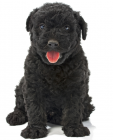Hungarian Puli
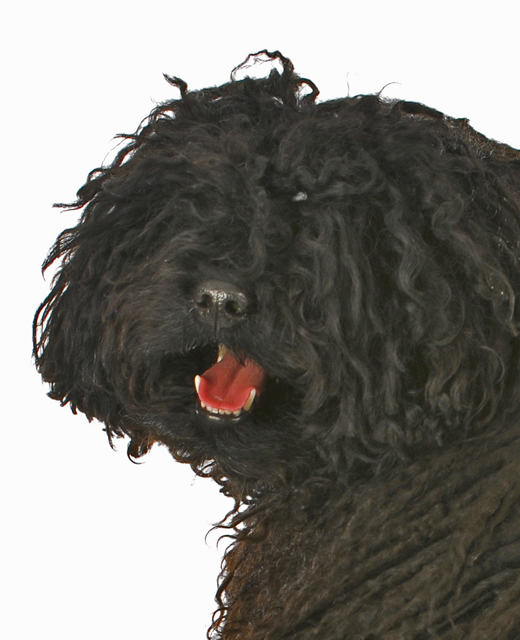
In my own words
I am the dog with the dreadlocks! Also sometimes known as the Hungarian water dog. Puli’s hail all the way from Hungary and have an appearance quite unlike any other dog breed, apart from maybe our bigger cousin, a dog called the Komondor, which is also another Hungarian breed. I am truly a unique breed of dog not only in my coat but my intelligence and my desire to understand and to please my owners. I’m unmistakable. Sometimes people get confused to which way round I am facing, which way I’m heading due to my coat and body shape. I need my thick, waterproof coat in my native country of Hungary to withstand intense cold and rain as I went about my work as a herder for the flocks. Due to my high level of intelligence I am trainable with a natural friendly disposition. I wouldn’t say though that I am a dog for the bone idle as my coat requires a great deal of attention and being the active chap I am I don’t appreciate a life of sybaritic ease and will demand a fair amount of exercise.
My ideal owner(s)
Active
Families
What they say about me
Intelligent
Agile
Obedient
Loyal
Faithful
Energetic
Is this Puli for you?
Test your knowledge about the Puli
Information essential about the Hungarian Puli
Breed Group: Pastoral
SIZE
Height: Female: 14–17 inches (36–42 cm), Male: 15–18 inches (39–45 cm)
Popularity:
Often referred to as a Hungarian legend, the Puli was practically unknown to the world until more recently, and in its home country of Hungary the breed was so closely treasured by the shepherds that most people in that country were only faintly aware of its existence. The Puli is highly valued as a working dog and companion, and much credence is given to this by the fact that as recently as the last fifty years it was not uncommon for a shepherd to give an entire year’s wages in payment for a Puli.
Breed History:
More than 1200 years ago, the original Magyar tribes swept into Central Europe from Asia, bringing with them ‘Puli’ dogs and settling in the Danube valley, as they took up an agricultural and pastoral lifestyle. From these early times, Pulis have played a valuable part in the lives of the Hungarian shepherds. It comes as no surprise that dogs in the northern Himalayas closely resembling the Puli are still to be found. In Tibet, the Lhasa Apso is said to be a relative of the Puli. The Tibetan terrier, somewhat smaller than the Puli, is also a related breed. ‘Puli’ in this Dravidian language means a certain method of rounding up and driving a herd, and in Tibet any herding dog is called a ‘Puli’
Character:
Puli’s are energetic and extremely intelligent, and whilst they are not always by nature a lap dog, they like to know where their human family is and to take part in all they do. Puli’s do not take well to being locked away from their family for hours on end and left to their own devices, day after day, but they are very adaptable to normal family life if they are allowed to take part in it. They do enjoy exercise even if this is in walking the children to school or a walk after the school run has been accomplished. Pulis also need ‘you’ time; time he/she can spend with you doing things that you both do together, and hopefully in activities that will lead to a well-trained and socialised dog. Whatever your day to day routine may be, you need to think carefully about how you can include your Puli in it; if it is not possible to incorporate him/her in your daily activity, then it is very likely that a Puli, or most other breeds for that matter, is not for you. Their brainpower can be far ahead of some other breeds, therefore deserving of an understanding owner who will ensure that boredom does not take over! Any dog that is bored can easily turn into a destructive force.
Temperament:
Pulis are lively, animated dogs who make untiring playmates for children. Their natural dispositions are friendly although they will announce visitors at the door and be somewhat wary of strangers but never aggressive, with them. They are busy dogs that like to make sure that everything they are involved in is being run properly and that all is well with their people and property. This is a happy, athletic and confident breed of dog with a high working and energy drive. As such, it needs plenty of exercise to keep it happy and combined with its easy going intelligence and sociability, the Puli is a perfect companion for an active family who want a dog that they can involve with their activities. They are generally very good with children and develop strong and protective bonds with their family, bringing their innate guarding instinct to the fore. Because of this, they can be wary with people they do not know and it is not uncommon for Puli to growl or even snap at a stranger from whom they feel threatened. They can have a habit of herding household pets and sometime people; so early socialisation is a must if they are to live with any other animals. As a rule, they make good, solid and sociable family pets when the correct training, exercise and leadership is provided. In a working capacity, there are few dogs, which can cover all types of ground and terrain with the same grace. Given their somewhat bulky appearance, they are surprisingly swift and can turn on the proverbial sixpence! The speed and agility at which they can change direction is marvelous in action and this trait makes them an excellent choice for canine sports such as agility.
Conformation:
As can be seen, the Hungarian Puli is a truly unique breed of dog, in his coat, his intelligence and his desire to understand and to please his owners. Indeed, the Hungarian shepherds have a saying ‘the Puli is not a dog, it’s a Puli. They are medium sized, self-confident dogs that may be discriminating in those they choose to befriend while they become devoted to their own family. They can be vocal if need be and are busy dogs that like to make sure that everything they are involved in is being run properly and that all is well with their people and property. They seem to get on very well with children particularly if brought up with them. Black is the most usual colour seen in the breed but there are also grey (mostly born black so hard to tell if a puppy will eventually grey out), white and a type of fawn colour known in Hungary as 'fako'. Pulis don't get brushed or combed nor do they shed coat; their coats are separated by hand as their cords grow. Bathing a Puli isn't difficult but a fully corded Puli can take quite a long time to dry. The cords fascinate people and make the breed look so distinctive. The herding instincts are a reflection on the demands of his working environment, on the Hungarian Plains he would have been in charge of large flocks of sheep. The Puli therefore had to be a forceful and vocal, as well as a companion and a close working herder and a constant to the shepherd. Very often it is the lovely flowing full length corded coat that first attracts people to the breed, seeing the cords streaming and whirling during the extremely agile movement of a Hungarian Puli - is quite a sight, and sometimes even difficult to know if he is coming or going!! His coat is his glory!
Colour:
Black, Silver, Brindle, Cream, Brown, White.
Training:
Pulis are very intelligent and fairly easy to train if you are consistent and kind in your methods. Training should begin right away; traits that may be endearing in a puppy may not be so acceptable in an adult. Well-trained Pulis excel in agility and obedience. Early, consistent training is essential for most breeds and particularly so for a breed as intelligent as a Puli, don't forget that the little bundle of fluffy you're looking at is a very smart little dog who will quickly figure out how to take charge of you if you don't start training from an early age.
They don't like to spend long periods of time alone -they love to be close to and involved with their family so not a breed to be left alone for long periods of time if, for example, you have to be out at work all day.
Care:
Their distinctive corded coat is formed from an intermingling of a woolly undercoat with a harsher outer coat. Once the cords have formed the grooming requirements are low, however a lot of attention is required between the ages of around 6 – 9 months when the coat is beginning to change from the soft puppy coat to the start of the corded coat. The Puli requires little special attention beyond their regular trips to the vet and keeping their eyes and ears clean and clear.
Health:
Puli have a life expectancy of between 10-15 years and there is a very small amount of Hungarian Puli health problems for owners to worry about. They are a very healthy, fit and active breed, making it extremely unlikely that they will suffer from any problems. As with all breeds however, it is necessary to be on the lookout for some issues, just in case they do occur. Some lines have been known to suffer from hip or elbow dysplasia, two conditions that affect the specific joint, it is caused by the abnormal formation of the hip ball and socket joint. Another possible Hungarian Puli health issue is von Willebrand disease, although this is extremely uncommon. Some may find that Hungarian Puli health problems include progressive retinal atrophy (PRA) and patellar luxation. PRA is when the retina deteriorates gradually over time, slowly reducing the vision of an affected dog.
You may also like:
If you like Hungarian Pulis, you may be interested in breeds of the same size »
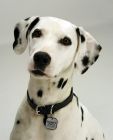
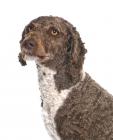
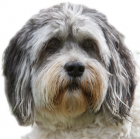

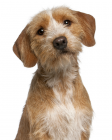
If you like Hungarian Pulis, you may like other breeds with similar characteristics »

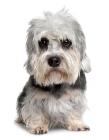

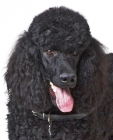

Advice on choosing your breed »
Find an animal shelter or rescue home where a Hungarian Puli is waiting for a new home »
If you intend to be out all day every day, leaving a dog to its own devices, you should seriously consider your thoughts on dog ownership until such time as you are able to devote more time to one.
If you live in a flat or apartment, are you sure that you can manage to give sufficient exercise. Some places do have communal areas, but may also have a ‘No Pets’ restriction placed upon them.
If you have no restrictions, and/or have suitable areas nearby for regular exercise, are you prepared to go out several times in a day whatever the weather conditions?
Have you looked carefully at Pulis in all stage of development and coat growth?
Do you feel that you have both time and inclination to cope with a rather special coat formation?
Are you prepared for bathing and properly drying a corded coat? A neglected coat can soon become foul smelling, and with it can come problems such as skin irritation and perhaps mites or fleas.
If you still want a Puli but feel that you cannot cope with the coat, then it is fairly common for them to be kept in neatly trimmed, short coats, but in so doing you will not have the distinctive appearance.
If you feel able to take on the regular requirements to keep a Puli fit, healthy, clean and well exercised then it is time to take further steps towards ownership.
Be the first to rate this breed »
|
*PLEASE NOTE: All our breed profiles are general, and all dogs are individuals. Always talk to the breeders and meet the owners you are buying from. Try to meet the dog and its parents if it is a puppy in their home environment.









